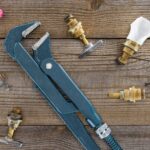Understanding Sockets, Plugs, and Switches
Sockets plugs switches are fundamental components of any electrical system. These devices allow us to safely connect appliances and control the flow of electricity. Modern sockets come in various types, including USB-integrated options for convenient device charging. Switches, on the other hand, regulate power flow and can be simple on/off toggles or more advanced dimmer varieties. Plugs are designed to fit specific socket types, ensuring compatibility and safety. It’s crucial to choose the right Sockets plugs switches for your needs, considering factors such as amperage, voltage, and intended use.
When selecting sockets and switches, consider their placement carefully. Install them at convenient heights and locations for easy access. For example, bedside tables benefit from nearby sockets for lamps and phone chargers. In kitchens, multiple sockets are essential for various appliances. Switches should be positioned near room entrances for immediate lighting control. Remember to account for future needs when planning socket locations. It’s often better to have extra sockets than to rely on extension cords, which can pose safety risks if overloaded.
Safety features in modern sockets and switches have significantly improved over the years. Many now include built-in surge protection to safeguard connected devices from power spikes. Child-safety shutters are common in residential sockets, preventing accidental insertion of objects. Some advanced switches offer motion sensing or timer functions, enhancing both convenience and energy efficiency. When upgrading your electrical accessories, always consult a qualified electrician to ensure proper installation and compliance with local codes.
Maintenance of sockets and switches is relatively simple but important. Regularly inspect them for signs of wear, damage, or overheating. Clean them gently with a dry cloth to remove dust accumulation. If you notice any discoloration, unusual warmth, or crackling sounds, it’s time to call a professional. Avoid overloading sockets with multiple high-wattage devices. Instead, distribute the load across different circuits. Proper care and usage of these electrical components can significantly extend their lifespan and maintain safety in your home or office.
The Convenience of Portable Sockets
Portable sockets offer flexibility in power distribution, making them invaluable for both home and office environments. These devices, also known as power strips or surge protectors, typically feature multiple outlets and can be easily moved as needed. They’re particularly useful in areas with limited built-in sockets or for temporary setups. Many modern Portable sockets include USB ports, accommodating direct charging of mobile devices without adapters.
When choosing portable sockets, consider the number of outlets and their spacing. Some models offer wide-spaced outlets to accommodate bulky adapters. Look for features like individual switches for each outlet, which can help save energy by completely cutting power to devices not in use. Surge protection is another crucial feature, safeguarding connected equipment from voltage spikes. Some high-end models even offer smart capabilities, allowing remote control via smartphone apps.
Safety should be a top priority when using portable sockets. Never daisy-chain multiple power strips, as this can lead to overloading and fire hazards. Check the amperage rating of the portable socket and ensure it matches or exceeds the combined power requirements of connected devices. Keep portable sockets away from water sources and heat-generating appliances. Regularly inspect the cord for any signs of wear or damage, replacing the unit if any issues are found.
Portable sockets can significantly enhance workspace organization. Use them to create charging stations for multiple devices or to power a group of office equipment. In home entertainment setups, they can neatly manage connections for TVs, gaming consoles, and sound systems. For temporary outdoor use, look for weather-resistant models with protective covers for the outlets. Remember, while portable sockets offer convenience, they should not be considered a permanent solution for insufficient built-in power outlets.
Optimizing Your Home Office Setup
Creating an efficient home office setup requires careful consideration of both electrical and ergonomic factors. Start by assessing your power needs. A typical home office might require sockets for a computer, monitor, printer, lamp, and phone charger. Ensure you have enough outlets to avoid overloading any single socket. Consider using a high-quality surge protector to safeguard your electronic equipment. Proper lighting is crucial; aim for a mix of ambient and task lighting to reduce eye strain and create a comfortable working environment.
Ergonomics play a vital role in a productive home office. Position your computer monitor at eye level, about an arm’s length away. Your chair should provide proper lumbar support and allow your feet to rest flat on the floor. If using a laptop, consider a separate keyboard and mouse for better posture. Cable management is often overlooked but important for both safety and aesthetics. Use cable ties or clips to keep wires organized and prevent tripping hazards. This also makes it easier to clean around your workspace.
Connectivity is essential in modern Home office and RTV equipments. Ensure your internet setup is robust, with a reliable router positioned for optimal signal strength. If Wi-Fi coverage is an issue, consider a mesh network system or Ethernet connections for critical devices. For video conferencing, invest in a good quality webcam and microphone. These can significantly improve your professional image during online meetings. Don’t forget about data backup; an external hard drive or cloud storage service can protect your important files.
Creating a dedicated workspace helps maintain a work-life balance when working from home. If possible, choose a quiet area away from household distractions. Use room dividers or screens if you’re working in a shared space. Consider noise-cancelling headphones to minimize ambient sounds. Personalize your space with plants or artwork to make it more inviting. Remember to include storage solutions for documents and supplies to keep your workspace organized and clutter-free. A well-planned home office can significantly boost your productivity and job satisfaction.
Selecting the Right RTV Equipment
Choosing the right Radio and Television (RTV) equipment is crucial for creating an optimal entertainment experience. Start by assessing your viewing habits and preferences. For instance, if you primarily stream content, a smart TV with built-in apps might be ideal. Consider the room size when selecting a TV; a general rule is to multiply the viewing distance in feet by 7.7 to get the recommended screen size in inches. Ultra HD (4K) resolution offers superior picture quality, especially for larger screens.
Sound quality is equally important in RTV setups. While built-in TV speakers have improved, they often lack depth and clarity. A soundbar is a space-efficient solution that significantly enhances audio quality. For a more immersive experience, consider a surround sound system. These typically include a receiver, front and rear speakers, and a subwoofer. When choosing speakers, consider factors like room acoustics and your preferred audio profile (e.g., bass-heavy or balanced).
Connectivity options are crucial in modern RTV equipment. Look for devices with multiple HDMI ports to accommodate various sources like gaming consoles, cable boxes, and streaming devices. Wi-Fi capability is essential for smart TVs and streaming devices. Some advanced setups might benefit from an HDMI switch, allowing you to connect more devices than your TV’s available ports. Consider future-proofing your setup by choosing equipment that supports the latest standards, such as HDMI 2.1 for high-refresh-rate gaming.
Energy efficiency should not be overlooked when selecting RTV equipment. Look for Energy Star certified devices, which meet strict energy efficiency guidelines set by the U.S. Environmental Protection Agency and the U.S. Department of Energy. LED TVs generally consume less power than their OLED counterparts, though OLED offers superior picture quality. Consider using smart power strips that can automatically cut power to devices in standby mode, further reducing energy consumption. Proper maintenance, including regular software updates and occasional professional cleaning, can help extend the lifespan of your RTV equipment.
Maintenance Tips for Electrical Accessories
Regular maintenance of electrical accessories is crucial for safety and longevity. Start by conducting visual inspections of sockets, switches, and cords every few months. Look for signs of wear, discoloration, or damage. If you notice any issues, such as loose connections or cracked casings, replace the item immediately. Keep electrical accessories clean by gently dusting them with a dry cloth. Avoid using water or cleaning solutions, as these can cause short circuits or electrical shocks.
Overloading is a common issue that can damage electrical accessories and pose safety risks. Be mindful of the amperage rating of your sockets and avoid connecting too many high-wattage devices to a single outlet. If you frequently need more outlets, consider having additional permanent sockets installed by a professional electrician. This is safer than relying heavily on extension cords or power strips. When using portable sockets, ensure they are not daisy-chained and are placed in well-ventilated areas to prevent overheating.
Proper cable management not only improves aesthetics but also contributes to the safety and longevity of your electrical accessories. Use cable ties or clips to keep wires organized and prevent them from being pinched or damaged. This is particularly important in high-traffic areas where cords might be stepped on or tripped over. For devices that are not frequently used, consider unplugging them completely to reduce standby power consumption and minimize wear on the socket.
In areas prone to power surges, such as during thunderstorms, use surge protectors to safeguard your electronic devices. These devices absorb excess voltage, protecting connected equipment from damage. However, surge protectors have a limited lifespan and should be replaced every few years or after a major surge event. For critical equipment, consider installing whole-house surge protection at your main electrical panel. This provides comprehensive protection for all circuits in your home or office.





